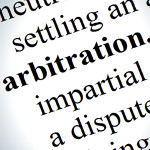Ralf Rodriguez has joined Foley & Lardner LLP’s Construction Practice as of counsel in the Miami office, the firm announced. Rodriguez has international experience litigating including construction law, commercial litigation, white-collar criminal defense and transportation law.
Rodriguez represents domestic and international general contractors, construction managers, sureties and other construction professionals in the United States and abroad in the negotiation, litigation, arbitration and mediation of construction and design defect claims, insurance claims and surety bond claims, among others. He has experience representing clients in zoning waivers, landlord and tenant disputes, environmental compliance, bankruptcy litigation and compliance with the Americans with Disabilities Act. Rodriguez has assisted clients in connection with a variety of construction projects, including sports arenas, high rise condominium developments, manufacturing plants and hydroelectric power facilities. Projects include the Florida Marlins Baseball Park, the Florida Citrus Bowl, the Miami Intermodal Center and the Cerro De Aguila Hydroelectric Power Plant in Peru.
“As our clients look to expand globally, Ralf’s international experience litigating complex construction matters will be an extremely valuable asset,” said Jeff Blease, chair of Foley’s Construction Litigation Practice.
In a release, the firm said:
Rodriguez also represents corporate clients in internal investigations and government inquiries by defending regulatory actions and fraud claims, including advice regarding compliance with anti-corruption laws such as the False Claims Act, the Foreign Corrupt Practices Act and similar legislation. He has worked with numerous corporate clients to structure and reassess corporate compliance and training programs, and has counseled clients to complete numerous investigations of sensitive matters in foreign jurisdictions, including Latin America and the Caribbean.
In addition to his legal practice, Rodriguez served as a law enforcement professional with the Department of Treasury and completed many public corruption and organized crime investigations, while working closely with the U.S. Attorneys’ Office for the Southern District of Florida.
“Ralf’s knowledge and experience will serve our clients well, as the local construction industry continues to boom,” said William Davis, managing partner of Foley’s Miami office.
Prior to joining Foley, Rodriguez was at Peckar & Abramson.
 In
In  Considerable litigation has arisen as to whether a waiver of subrogation provision in a construction contract applies to bar an insurer’s subrogation claim against a contractor to the extent the insurer covered damage to the owner’s “non-work” property under the owner’s existing property policy, writes
Considerable litigation has arisen as to whether a waiver of subrogation provision in a construction contract applies to bar an insurer’s subrogation claim against a contractor to the extent the insurer covered damage to the owner’s “non-work” property under the owner’s existing property policy, writes  Construction contracts are often such voluminous documents that it can be difficult for owners to recognize and adequately negotiate the key terms that play the largest role in how construction risk and costs are allocated, writes
Construction contracts are often such voluminous documents that it can be difficult for owners to recognize and adequately negotiate the key terms that play the largest role in how construction risk and costs are allocated, writes  As general contractors take on more projects, they will likely find themselves working with new and unfamiliar subcontractors, warn James T. Dixon, P. Wesley Lambert, Amanda M. Leffler and Amanda P. Parker of
As general contractors take on more projects, they will likely find themselves working with new and unfamiliar subcontractors, warn James T. Dixon, P. Wesley Lambert, Amanda M. Leffler and Amanda P. Parker of  The protracted time for a construction case to get to trial and the attendant cost and expense has led the construction bar away from the courthouse and into the arbitration room, writes
The protracted time for a construction case to get to trial and the attendant cost and expense has led the construction bar away from the courthouse and into the arbitration room, writes